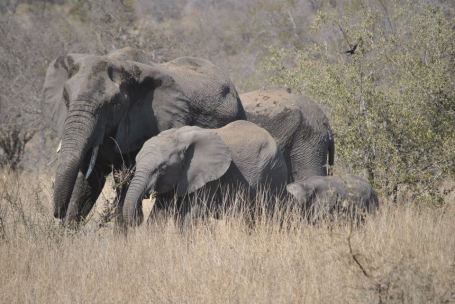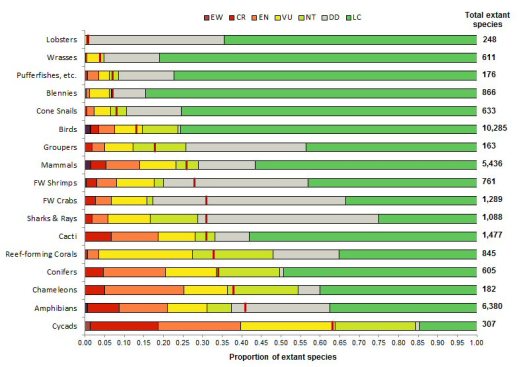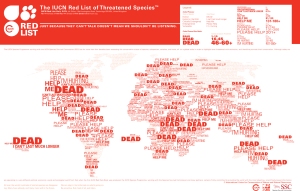With the end of the year fast approching, its now time to take stock on what we have gained – and lost – in the world of wildlife conservation. Almost one year ago today, I published a similar ‘stocktake’ of wildlife news, titled “2013: A Loss For Conservation”, unfortunately, in the year since posting, conservation biology still has little to celebrate.
Across Africa, our land giants are still facing extreme pressure from highly organised poaching. 2013 saw an average of 2.6 Rhino being poached daily in South Africa, with the total for the year falling at 1004. To see now that – for the 8th consecutive year – poaching levels have now exceeded the previous year, is truly heart breaking. The total for 2014 is already around 1150 Rhino, with an average of 3.2 Rhino falling per day. This figure is now above the average natural rate of reproduction and is expected to continue its unsustinable increase.
Elephants have also been hit by a similar poaching surge. Across central Africa approximately 35,000 elephants have been lost to poaching this year, equating to one elephant every 15 minutes. This high level poaching seems to be largely restricted to eastern Africa, with Tanzania itself losing roughly 10,000 of these Elephants. Furthermore, wildlife tracking of ivory has once again been linked to the terrorist organisation Al-Shabab, who are responsible for a series of attacks across Somalia. Al-Shabab has a loose alliance with Al-Qaeda – also believed to benefit from illegal ivory trafficking.
For 2014, one of the most troubling statistics produced, was that of total biomass loss. In a report produced by the WWF incorporating 10,000 wildlife populations (representing 3000 species), researchers found a 52% average loss of wildlife globally. This figure is not a measure of the number of species, but total number of wildlife, indicating that since 1970, half of the worlds wildlife has been loss. Individual examples support this contention, with many species losing upwards of 90% of natural homeranges – due to human expansion.
The IUCN – responsible for assessment and categorising of species – have released figures relating to species ‘changing red list status 2013-2014’. Redlisted species are re-assessed often to observe any increase/decrease in their conservation status. Unfortunately, the majority of status changes between 2013-2014 were species moving up the red list, becoming more endangered. To view this report yourself, please follow: http://cmsdocs.s3.amazonaws.com/summarystats/2014_3_Summary_Stats_Page_Documents/2014_3_RL_Stats_Table_7.pdf .
So what is a species worth? Wildlife trafficking is now the third most lucrative illegal product, following weapons and drugs. At an estimated US $19 Billion annually, this has become a huge, highly organised industry with by far greater funds and support than the conservationists trying to fight it. Havoscope is an online source of black market prices, providing the average price of illegal products sold. Through the collection of public information and government reports, black market prices of trafficked wildlife can now be examined. For instance, the endangered Tiger (with an estimated 3200 left in the wild) has a market price of $50,000 alive, or $5000 dead. The pangolin, which recently has been labeled as the highest trafficked animal is worth $300 per kg of meat or $1000 alive. The most valuable wildlife commodity apppears to be the gorilla, fetching an average $400,000 US dollars on the black market. For the full gruesome run down of wildlife prices: http://www.havocscope.com/exotic-animals-for-sale/
The figures seen above are just a small example of what wildlife conservationists are now facing. It has become clear that global wildlife trafficking was largely under valued and has been allowed to thrive for far to long. The threat from this highly organised system is now acknowledged and since been labeled as the greatest issue in wildlife conservation of our time. Wildlife trafficking is now being fought on every level, from anti-poaching units across wild Africa, to trafficking kingpins in the high court. Unfortunately however, the war for wildlife is far from over, and many species will reach extinction before human greed is put to rest.
Statistics used in this blog have been collected from a series of sources. Ive tried to avoid in-text references to ease the flow. However, if you wish to follow up these statistics, you can find them here:
IUCN: http://www.iucnredlist.org/about/summary-statistics#Tables_5_6
WWF: http://www.worldwildlife.org/pages/living-planet-report-2014
Pangolin/Tiger: http://www.unitedforwildlife.org/#!/the-facts
Rhino: http://stoprhinopoaching.com
Elephant: http://www.wcs.org
Attached also, is a link to our charity page, RidingForWildlife. For up to date information regarding the world of wildlife conservation, please follow the link and like our Facebook.
Thank you and Merry Christmas.
Turner.


